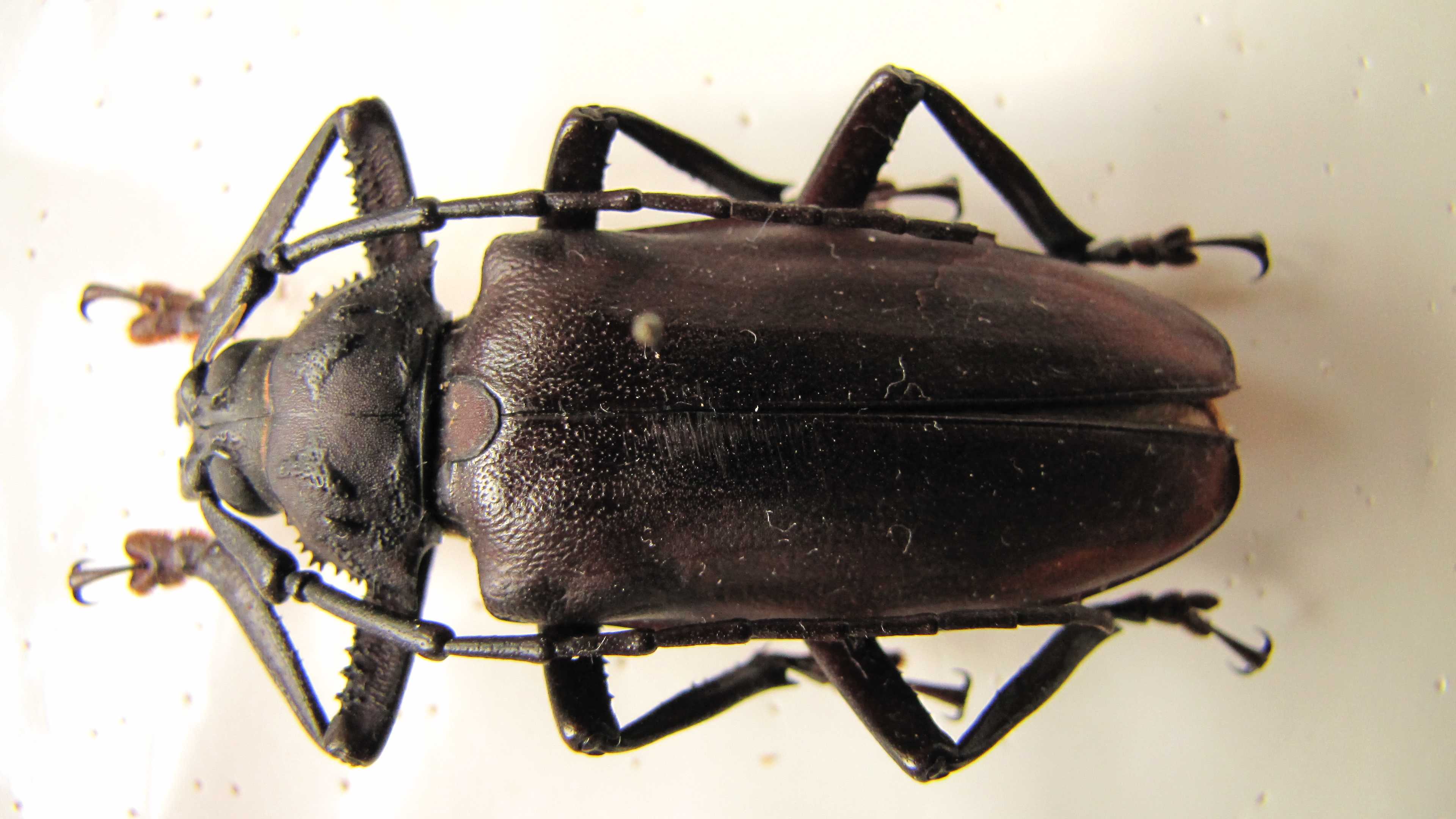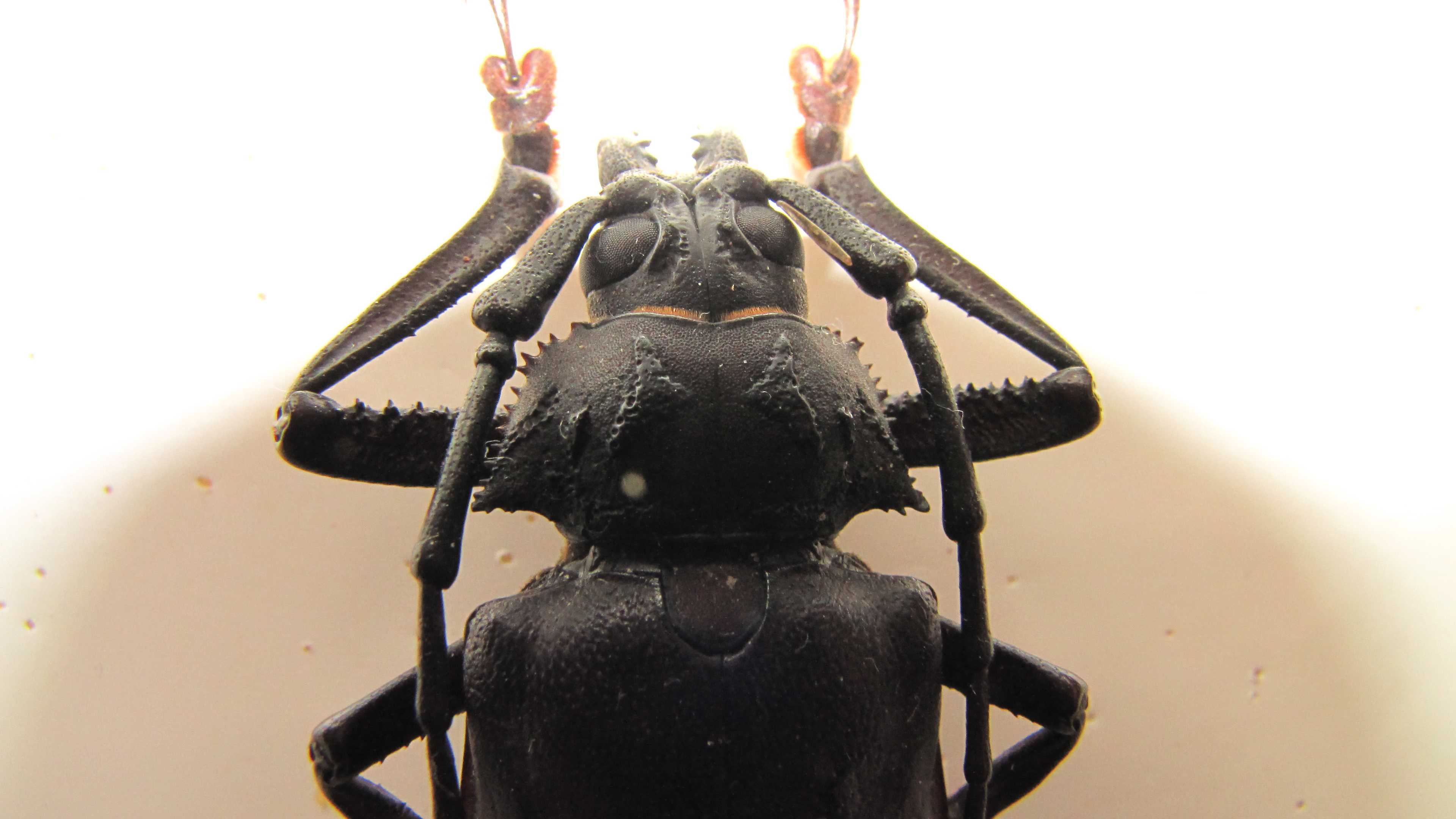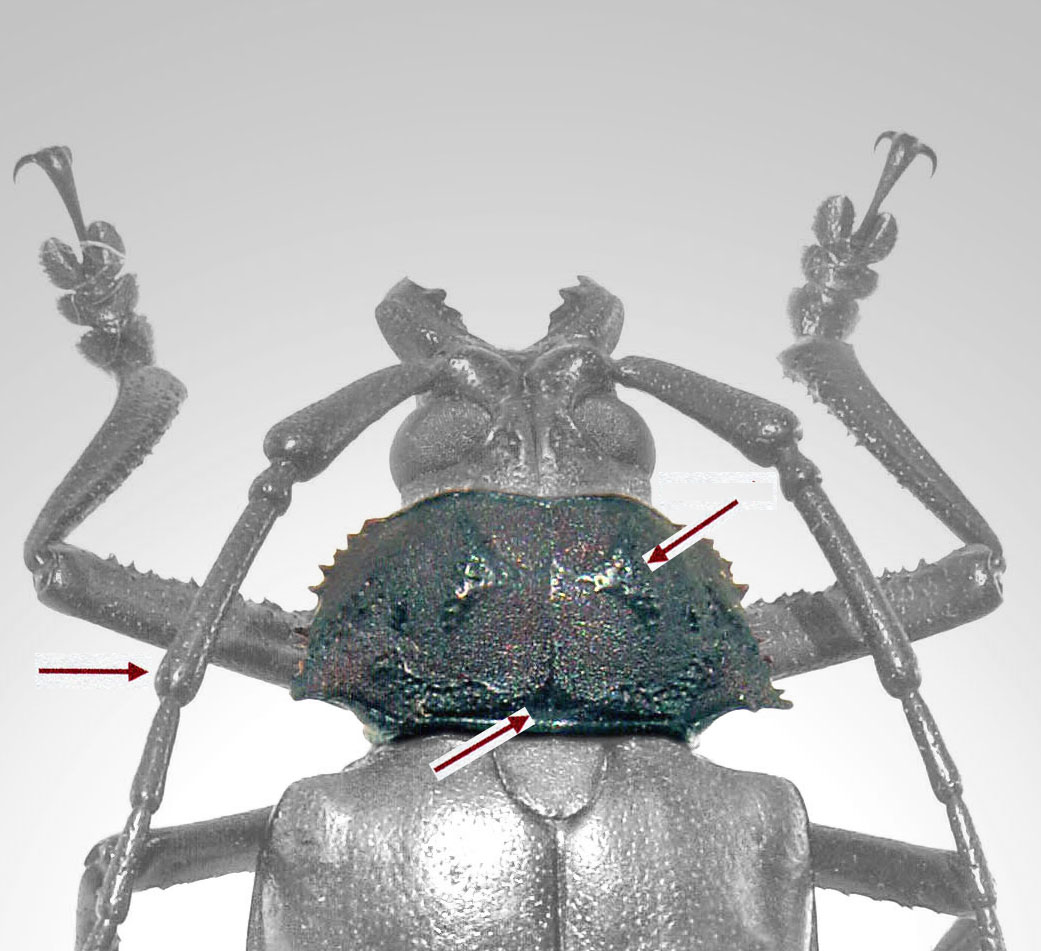| T O P I C R E V I E W |
| Jiri |
Posted - 03/01/2016 : 10:51:43

344.11áKB

259.36áKB
Dear friends,
could you help me please with the identification of this specimen from Sarawak?
I think that all Rhaphipodus species from Borneo are a bit different..
Thank you!
Jiri |
| 6 L A T E S T R E P L I E S (Newest First) |
| dryobius |
Posted - 23/01/2016 : 15:30:08
P. inermis occurs in Borneo. P. ritsemae occurs in Borneo & Sumatra.
The literature will catch up to the facts someday. |
| Capitaine |
Posted - 22/01/2016 : 11:52:44
hello Dan, I just give you my opinion on the species of this genus.
P. inermis is known from Borneo and ritsemai from Sumatra (see Titan base and Pirkl base).
In addition, could you explain why the species from Borneo was called "inermis" if it's not related to the lack of spines on the tibiae?
see here.
Unfortunately, I've never seen the type of inermis. |
| dryobius |
Posted - 22/01/2016 : 02:12:02
Drumont sent me a photo of the male syntype of P. inermis. The photo posted by Jiri is much closer to P. ritsemae |
| Jiri |
Posted - 04/01/2016 : 21:29:30
Perfect!! Thank you!! Jiri |
| Capitaine |
Posted - 04/01/2016 : 11:23:58
Hereafter you can see a picture showing a male of Paroplites inermis (previously identified as P. ritsemai).
If you compare the pronotum with your specimen, you have similar sexual marks and the same indentation close to the posterior border.
In addition, the third antennal joint is scarcely shorter than both 4th and 5th.
There are 5 species of Paroplites, 3 are widespread in Australia, and the 2 others in Indonesia and Malaysia (ritsemai in Sumatra island and inermis in Borneo).

183.16áKB |
| Capitaine |
Posted - 03/01/2016 : 17:38:09
I think you are well on the tribe Remphanini.
Maybe a specimen male of Paroplites inermis (Aurivillius,1910) but I don't know the male of this species ' '. '. |


